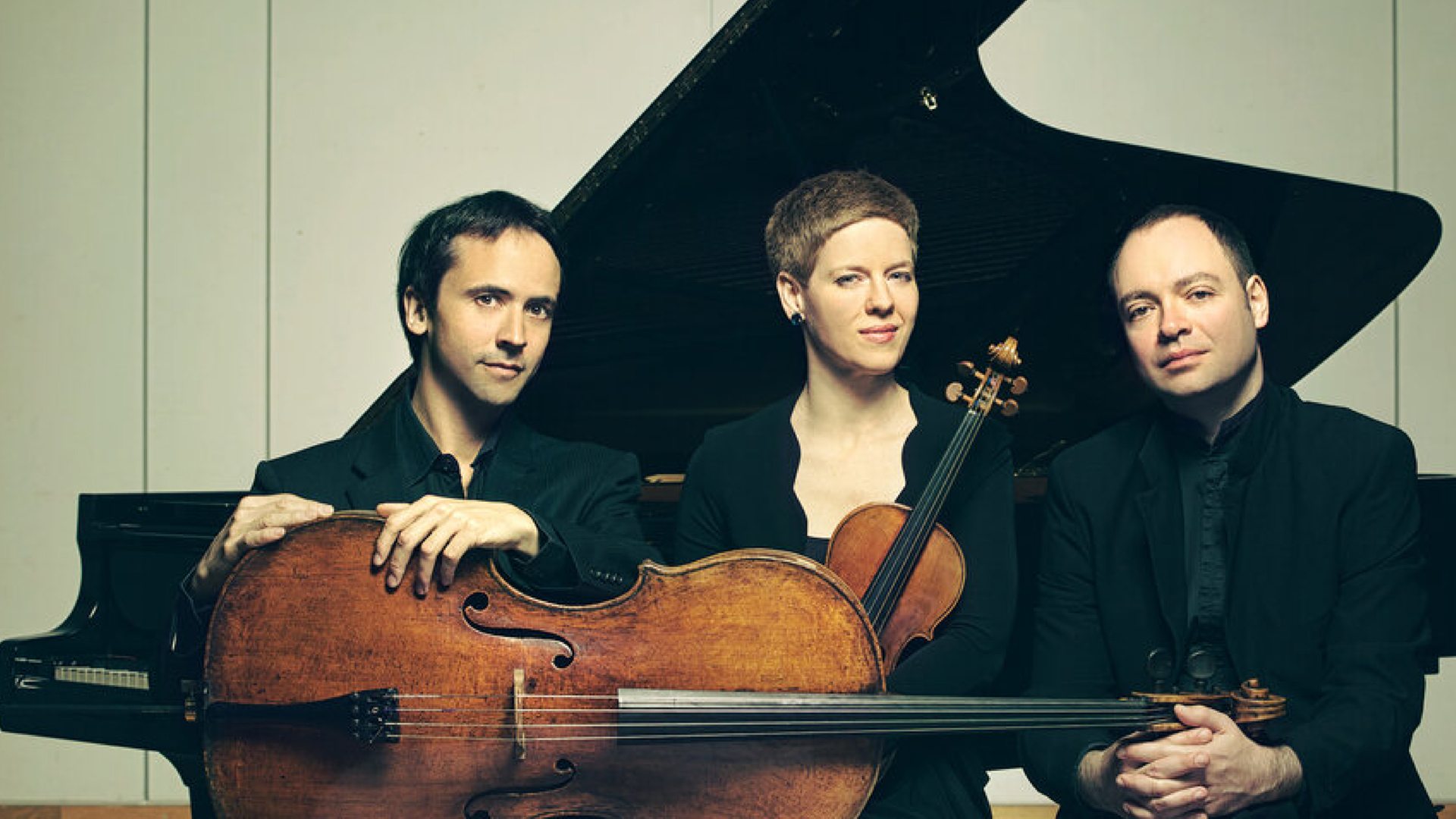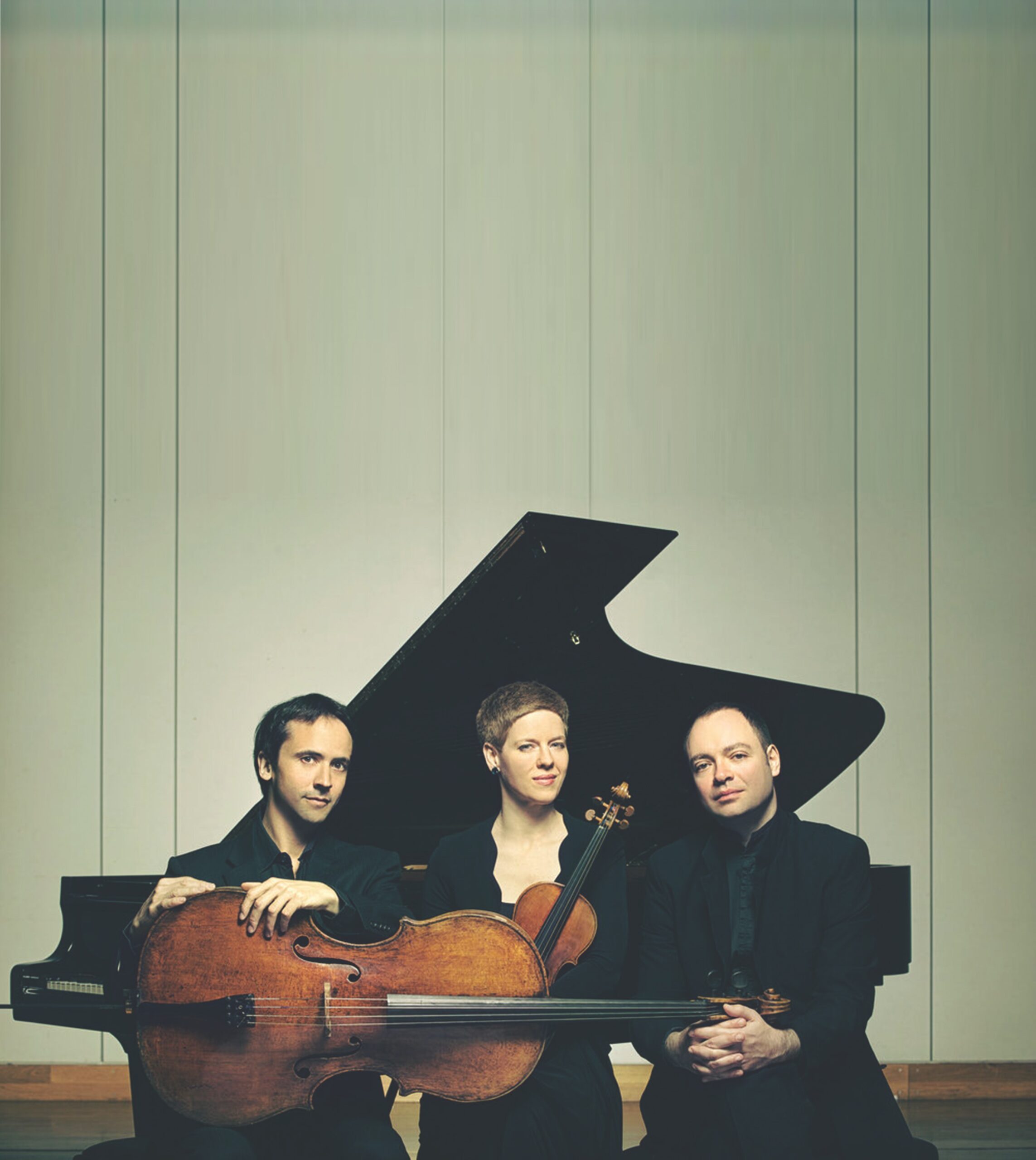By Lucy Caplan
Lucy Caplan is Assistant Professor of Music at Worcester Polytechnic Institute and a winner of the Rubin Prize for Music Criticism.
Only about a decade passed between the final year of Johannes Brahms’s life, in 1897, and the first year of Elliott Carter’s, in 1908. Yet while Brahms began writing the trio that appears on this evening’s program in the 1850s, Carter’s Epigrams were not composed until well into the twenty-first century. The vast stretch of time that separates these pieces, despite the relative proximity of their respective composers’ lives, suggests that our tendency to divide music history into clearly defined periods—Baroque, then Classical, then Romantic, and so on—may be overly neat. Instead, we might think more expansively about the connective threads that link composers of different eras, regions, and aesthetic proclivities.
Schumann once mused that the future of music, in his view, should be “a higher echo of the past.” But that perspective was not his alone; there is a shared retrospective quality to this evening’s program. Schumann’s trio is an homage of sorts to his predecessors in the genre, merging Bach’s counterpoint with Beethoven’s vivacity with Schubert’s lyricism. Carter’s work, written when he was more than one hundred years old looks back to his collegiate study of Greek poetry with a series of brief, pithy pieces. Brahms’s trio is a late-in-life revision of one of his earliest works, completed more than three decades after his first attempt. Together, they illuminate a consistent curiosity about the past among three very different composers, a shared interest in circling back to the beginning.
Robert Schumann, Piano Trio No. 2 in F Major, Op. 80 (1847)
A quietly joyful atmosphere pervades Schumann’s Piano Trio No. 2. He wrote two piano trios in 1847, within a few months of one another, and while the first is alternately melancholic and stormy, this one, in his own description, “makes a friendlier and more immediate impression.” Rather than dashing off to embark upon soloistic flights of fancy, all three players stay mainly in the middle registers of their instruments. Intimacy takes precedence over brilliance, with each member of the ensemble staying closely attuned to the others by way of melodies played in parallel, imitative figures that bounce from player to player and passages of close-knit counterpoint. From these understated materials, the trio crafts a vibrant, tightly woven tapestry.
The first movement, marked Sehr lebhaft (very lively), begins with a serious yet genial theme, whose phrases resist the sense of a definitive ending, seeming always to stretch on for just a few more measures. The violin and cello each introduce the movement’s second theme—a loose quotation from one of Schumann’s songs, a lovely descending melody which drapes easily over the gentle texture of eighth notes in the piano. The second movement has an achingly beautiful calm. There is a subtle canon between the piano and cello at its beginning, but the listener is just as likely to be drawn to the searching melody in the violin. In the graceful third movement, the composer offers still another melody that is characterized by a downward-falling, sighing figure. Like the movement that precedes it, it features a canon among the three voices—but this time the imitation is hard to miss, creating a sense of unmistakable cohesion. In the final movement, Schumann casts off the understated feeling that has characterized much of the trio so far. Now is the time for scales that vault upward, propulsive dotted rhythms, and a sense of blossoming energy, which propels us through to the work’s triumphant close.
Elliott Carter, Epigrams for piano, violin, and cello (2012)
When Elliott Carter applied to Harvard in 1926, Charles Ives wrote him a letter of recommendation. But although Carter was already immersed in the world of modern music—he heard the American premieres of Stravinsky’s The Rite of Spring and Schoenberg’s Pierrot Lunaire, and he and Ives attended concerts together—he elected to study Greek, philosophy, and literature in college rather than music. As he continued to refine his technique as a composer, he became enamored with Renaissance- and Baroque-era early music, from Machaut’s motets to Bach’s cantatas. These heterogenous influences are evident in Carter’s music, which has a kaleidoscopic range that stretches from mannered choral pieces to ultramodernist quartets to conceptually idiosyncratic symphonies. Later in his life, he became fascinated by small-scale compositions, writing a wide array of short pieces for soloists or small ensembles of just a few players. After his one hundredth birthday, in 2008, he wrote almost twenty-five new works.
The Epigrams are Carter’s final composition, written during the spring and summer of 2012. In title and content, they allude to the ancient Greek literary form characterized by conciseness and cleverness. (The poet Samuel Taylor Coleridge offered the following example: “What is an Epigram? A dwarfish whole, / Its body brevity, and wit its soul.”) Carter’s twelve musical epigrams are each barely more than a minute in length, yet they are full of surprising twists and turns. In the second, for example, a flurry of angry chords abruptly gives way to the icy calm of sustained harmonics in the violin and cello. In the sixth, the cello offers a cantabile melody over a wide melodic range, which the violin repeatedly interrupts. The eighth epigram begins with a feeling of perpetual motion, followed by a concluding series of stark, simple tones. The overarching effect of the set as a whole is one of unsettled entropy, yet the piece also includes moments of ethereal beauty.
Johannes Brahms, Trio No. 1 in B Major, Op. 8 (1889)
Brahms was never quite satisfied with the piano trio he composed in 1854, when he was in his early twenties. It was “dreary,” he thought, and it needed more editing, but once it had been accepted by a publisher it was too late. More than three decades later, when the publisher transferred the rights to Brahms’s earliest compositions, an opportunity to return to the piece finally arose. “I have rewritten my B Major Trio,” he reported in a letter to Clara Schumann. “But will it be better?” Not only was the revised trio a piece of incredible beauty, but it also offers fascinating insight into Brahms’s skills as a composer. He seems to effortlessly cast off the initial work’s less successful features (a sleepy second theme in the first movement, for instance, is replaced by a more rhythmically vital version) and add in new ones (a beloved cello melody that appears in the third movement). In the second movement, he elected to change nothing at all.
As in the original, the revised version of the trio begins with a gloriously impassioned melody in the cello, soon joined by the violin. A minor-key second theme feels more urgent but no less lyrical. Throughout the movement, syncopations and triplets in the piano create a sense of almost inexhaustible depth, an answer to the broad expansiveness of the melodic line. The second movement is a dramatically conceived scherzo, darker and less mischievous than its Mendelssohnian counterparts. Yet the clouds part for its contrasting trio, a lovely, warm dance with a rustic elegance. The third movement combines a sense of architectural grandeur—created through slowly paced rhythms, abundant double-stops in the strings, and unhurried rests—with an introspective, even intimate character. The cello takes center stage partway through the movement with a gorgeous melody whose openhearted feeling recalls the first movement. In the final movement, Brahms turns to minor. The vexed first theme is both lyrical and propulsive, and the pianist supports the string players with a near-constant river of triplets. A somewhat more optimistic second theme offers a respite, but the movement never loses its sense of urgency, and it concludes with a restatement of the opening theme that only increases in intensity and expressivity, becoming ever more ardent.






